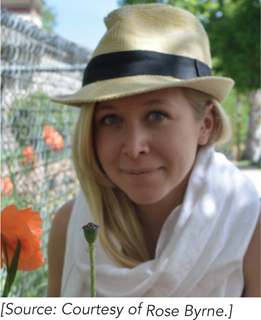Chapter Introduction
12: DNA Mutation and Repair
413
MOMENT OF DISCOVERY

One of the defining moments in my career as a scientist happened at no less magical a place than Cold Spring Harbor. I had been invited to give a talk at the Phage meeting. My results showed that E. coli, normally a radiation-
—Rose Byrne, on her discovery that E. coli could become a radiation-
414
A DNA genome encodes the instructions for the production of every molecule in the cell and, as such, is also essential for reproduction of the cell for future generations. Because each cell contains only one or two copies of its DNA, the DNA sequence is highly protected from harm. DNA is a relatively stable molecule, but damage to it is inevitable: our dependence on oxygen and water makes us vulnerable to a continuous barrage of oxidative and hydrolytic reactions, many of which strike intracellular molecules, including DNA. DNA is also subject to attack by many other reactive chemicals in the environment, both natural and synthetic, as well as by various types of irradiation from the sun and the radioactive decay of terrestrial elements. DNA can also be altered by mistakes made during its own replication or recombination. Damage and sequence alterations to DNA are often quickly repaired, but when they are not, the DNA becomes permanently altered and harbors a mutation.
Mutations are changes in DNA sequence, and when mutations occur in germ-
Mutations occur through many different mechanisms, but all originate as an alteration in DNA. Only after the alteration is converted through replication into an incorrect base pair (such as an A=T pair where a G≡C pair should be) does it become a stable, inheritable mutation. Therefore the cell has a limited amount of time to fix the initial alteration and restore the DNA to its normal sequence, before replication converts the alteration into a mutation that will be passed on to the next generation. In all organisms, an army of repair enzymes has evolved that holds a constant vigil over the DNA. Indeed, the vast majority of damaged nucleotides that occur in a mammalian cell every day are repaired; fewer than one in a million become a mutation. DNA repair often takes advantage of the double-
The enormous selective pressure favoring enzyme systems that repair DNA damage has led to some of the most fascinating enzyme reactions in biology. DNA repair reactions are also among the most costly in terms of energy—
We begin this chapter by defining mutations and describing how replication of a damaged nucleotide base can become an inheritable mutation. We explore different types of DNA damage that arise from agents inside the cell, as well as from those in the external environment, and then consider many of the DNA repair processes that restore the original sequence. As we will see, certain types of DNA damage can be repaired by more than one enzyme system, whereas others are repaired by specific processes dedicated to a particular type of DNA damage. Remarkably, some repair mechanisms can recover the original, correct DNA sequence even when it cannot be obtained from a complementary DNA strand. Other types of DNA damage, however, prevent recovery of the original sequence, and repair gives rise to mutations. Although it seems counterintuitive that a repair process would produce a mutation, the alternative could spell death to a cell. For example, some DNA lesions halt the replication machinery. This is the worst thing that can happen to a cell and must be avoided at all costs; if replication cannot be completed, daughter cells will not receive a full complement of DNA, and they will die. We explain how cells resolve these conflicts, enabling them to complete replication even at the expense of incurring a mutation.
Most DNA repair processes evolved before the emergence of different cell types from the last common ancestor, and thus the major DNA repair pathways are similar in bacterial, archaeal, and eukaryotic cells. Because bacterial repair systems have been studied most intensively, they provide us with the highest level of mechanistic detail. However, there are several aspects of eukaryotic repair that differ from bacterial repair. We discuss these differences, as well as the human diseases that arise from defective DNA repair or from DNA alterations that do not lend themselves to repair.